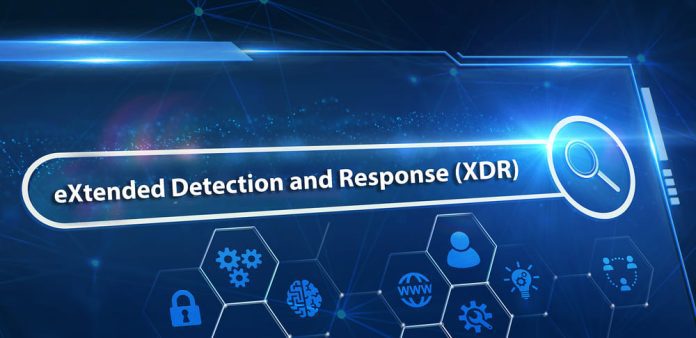XDR (Extended Detection and Response) can be defined as a Software as a Service based incident response and security detection tool that is vendor specific, according to analyst firm Gartner. This tool brings together multiple security products, natively, into a unified security operations system in which all licensed components are integrated.
By providing a holistic yet simplified view of threats throughout the whole technology landscape, XDR makes it possible for enterprise to surpass typical detective controls. To facilitate faster and better outcomes, XDR delivers actionable threat information to security operations in real-time.
The main benefits of XDR (Extended Detection and Response) include:
- Enhanced capabilities when it comes to response, detection and protection
- Enhanced operational security personnel productivity
- Effective security threat detection and response at a lower cost of ownership
It is possible to bring together numerous products into an integrated response and incident detection platform with the help of Extended Detection and Response. When it comes to EDR (Endpoint Detection and Response) solutions, XDR is a logical evolution to a primary event response apparatus.
The Importance Of XDR To Enterprises
In addition to revealing advanced threats, Security Operations Centers (SOCs) also need a platform that unifies all relevant security data intelligently. Enterprises are moving as fast as they can to secure a growing number of highly vulnerable digital assets both within and without the conventional network perimeter, as adversaries employ increasingly complex TTPs (Tactics, Techniques and Procedures) to exploit and avoid traditional security controls.
The recent work from home requirements have increased the strain on resources that security teams have had to work with for years in the past. With stricter budgetary constraints and the same or reduced resources, security experts are being asked to do more. To safeguard the whole landscape of technology assets, including cloud workloads, network, mobile and legacy endpoints, without putting too much pressure on in house management resources and staff, enterprises need proactive and integrated security measures.
Organization risk and security managers are forced to overcome numerous disconnected data sets and security tools from various vendors, with potentially malicious insiders, lone attackers, nation states, hacking groups and other bad actors always lurking. Under all time high levels of operational stress, security staff is forced to struggle with a mountain of data, resulting in alert overload with numerous false positives and minimal unification of data with incidence response or analysis tools.
It is important for risk and security management experts in organizations to think about the productivity value and benefits of an Extended Detection and Response solution.
A Description of How Extended Detection And Response Works
Enhancing productivity of security operations through the improvement of response and detection capabilities by integrating control and visibility across cloud, network and endpoints are the main value propositions of Extended Detection and Response capabilities or products. Multiple streams of telemetry are ingested and distilled by XDR. To increase the access of security teams – that do not have resources for highly customized point solutions – to more complex security operations, XDR can analyze various threat vectors including TTPs. To facilitate faster progression to a response to threats, XDR removes the challenging investigation and detection cycles, while offering business and threat focused context.
The advanced threat response and detection capabilities offered by XDR include:
- Target attack detection and response
- Technological asset and user behavior analysis native support
- Threat intelligence from external and local threat intelligence sources
- Automatic alert correlation and confirmation to minimize cases of false positives
- Enhanced speed and accuracy when it come to incident triage by integrating relevant data
- Assisting with prioritization of activities through hardening capability with weighted guidance and centralized configuration
- Covering all threat vectors with comprehensive analytics
- Streamlining Security Operations Center processes through automation and orchestration
Advantages Of Extended Detection And Response
By bringing together multiple security solutions into an integrated response and incident detection platform, XDR products get to prove their value. These products are an effective transformation of EDR (Endpoint Detection and Response) platforms into the main response tool for incidents. You need to have more than just a collection of point solution to detect today’s advanced threats. With advanced context, XDR can streamline response.
The following advanced threat response and detection capabilities can be facilitated by XDR:
- Streamlining of a large amount of alerts into a smaller group that can be manually investigated
- Faster resolution of security alerts by providing unified incident response options that have relevant context from all security component
- Delivering comprehensive protection by offering response options that surpass infrastructure control points, such as endpoints, cloud and network
- Improving productivity by automating repetitive tasks
- Providing a common workflow and management experience across security components to reduce training and up-level Tier 1 support
- Offering high quality detection content that is useable and requires minimal tuning
When responding to an attack in the environment, XDR enhances critical Security Operations Center functions:
The Detection Function
Bringing together endpoint telemetry with a variety of security controls providers and security incidents picked up and analyzed by security analytic and information platforms, in order to find increasingly meaningful threats.
The Investigation Function
To reduce signal from noise and help with identification of root causes, human-machine teaming correlates all relevant threat information and uses situational security context.
The Recommendations Function
In addition to offering applicable response options that would enhance fixing or containment of a detected threat or risk, it also provides prescriptive recommendations to analysts to facilitate an investigation through the use of other queries.
The Hunting Function
Making it possible for threat hunters to find and take action considering the recommendations by providing a capability for a common query across data repository with multi vendor sensor telemetry when searching for questionable threat behaviors.
A vendor that can provide a product portfolio and partner environment with market maturity, depth and breadth to link – meaningfully and seamlessly – and correlate all detections from numerous threat vectors is needed when it comes to the provision of a comprehensive XDR platform. Come up with the context, create a priority of risks and formulate a response – all automatically – that can be implemented across the enterprise with ease.


































